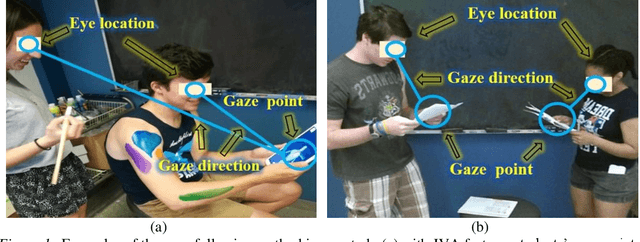Zang Guo
Deep neural networks for collaborative learning analytics: Evaluating team collaborations using student gaze point prediction
Oct 16, 2020



Abstract:Automatic assessment and evaluation of team performance during collaborative tasks is key to the learning analytics and computer-supported cooperative work research. There is a growing interest in the use of gaze-oriented cues for evaluating the collaboration and cooperativeness of teams. However, collecting gaze data using eye-trackers is not always feasible due to time and cost constraints. In this paper, we introduce an automated team assessment tool based on gaze points and joint visual attention (JVA) information extracted by computer vision solutions. We then evaluate team collaborations in an undergraduate anatomy learning activity (N=60, 30 teams) as a test user-study. The results indicate that higher JVA was positively associated with student learning outcomes (r(30)=0.50,p<0.005). Moreover, teams who participated in two experimental groups, and used interactive 3-D anatomy models, had higher JVA (F(1,28)=6.65,p<0.05) and better knowledge retention (F(1,28) =7.56,p<0.05) than those in the control group. Also, no significant difference was observed based on JVA for different gender compositions of teams. The findings from this work offer implications in learning sciences and collaborative computing by providing a novel mutual attention-based measure to objectively evaluate team collaboration dynamics.
 Add to Chrome
Add to Chrome Add to Firefox
Add to Firefox Add to Edge
Add to Edge